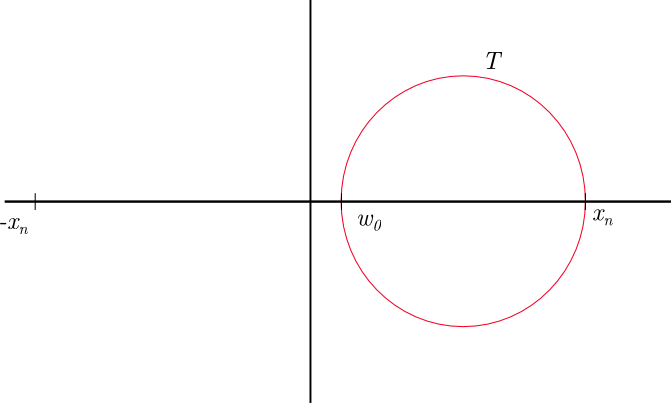In no particular order, and with no relevance whatsoever to the beginning of the year, here are three mathematical facts I learnt in recent months which might belong to the “I should have known this” category:
(1) Which finite fields $latex k$ have the property that there is a “square root” homomorphism
$latex s\ :\ (k^{\times})^2\rightarrow k^{\times},$
i.e., a group homomorphism such that $latex s(x)^2=x$ for all non-zero squares $latex x$ in $latex k$?
The answer is that such an $latex s$ exists if and only if either $latex p=2$ or $latex -1$ is not a square in $latex k$ (so, for $latex k=\mathbf{Z}/p\mathbf{Z}$, this means that $latex p\equiv 3\pmod 4$).
The proof of this is an elementary exercise. In particular, the necessity of the condition, for $latex p$ odd, is just the same argument that works for the complex numbers: if $latex s$ exists and $latex -1$ is a square, then we have
$latex 1=s(1)=s((-1)\times (-1))=s(-1)^2=-1,$
which is a contradiction (note that $latex s(-1)$ only exists because of the assumption that $latex -1$ is a square).
The question, and the similarity with the real and complex cases, immediately suggests the question of determining (if possible) which other fields admit a square-root homomorphism. And, lo and behold, the first Google search reveals a nice 2012 paper by Waterhouse in the American Math. Monthly that shows that the answer is the same: if $latex K$ is a field of characteristic different from $latex 2$, then $latex K$ admits a homomorphism
$latex s\ :\ (K^{\times})^2\rightarrow K^{\times},$
with $latex s(x)^2=x$, if and only if $latex -1$ is not a square in $latex K$.
(The argument for sufficiency is not very hard: one first checks that it is enough to find a subgroup $latex R$ of $latex K^{\times}$ such that the homomorphism
$latex t\, :\, R\times \{\pm 1\}\rightarrow K^{\times}$
given by $latex t(x,\varepsilon)=\varepsilon x$ is an isomorphism; viewing $latex K^{\times}/(K^{\times})^2)$ as a vector space over $latex \mathbf{Z}/2\mathbf{Z}$, such a subgroup $latex R$ is obtained as the pre-image in $latex K^{\times}$ of a complementary subspace to the line generated by $latex (-1)(K^\times)^2$, which is a one-dimensional space because $-1$ is assumed to not be a square.)
It seems unlikely that such a basic facts would not have been stated before 2012, but Waterhouse gives no previous reference (and I don’t know any myself!)
(2) While reviewing the Polymath8 paper, I learnt the following identity of Lommel for Bessel functions (see page 135 of Watson’s treatise:
$latex \int_0^u tJ_{\nu}(t)^2dt=\frac{1}{2}u^2\Bigl(J_{\nu}(u)^2-J_{\nu-1}(u)J_{\nu+1}(u)\Bigr)$
where $latex J_{\mu}$ is the Bessel function of the first kind. This is used to find the optimal weight in the original Goldston-Pintz-Yıldırım argument (a computation first done by B. Conrey, though it was apparently unpublished until a recent paper of Farkas, Pintz and Révész.)
There are rather few “exact” indefinite integrals of functions obtained from Bessel functions or related functions which are known, and again I should probably have heard of this result before. What could be an analogue for Kloosterman sums?
(3) In my recent paper with G. Ricotta (extending to automorphic forms on all $latex GL(n)$ the type of central limit theorem found previously in a joint paper with É. Fouvry, S. Ganguly and Ph. Michel for Hecke eigenvalues of classical modular forms in arithmetic progressions), we use the identity
$latex \sum_{k\geq 0}\binom{N-1+k}{k}^2 T^k=\frac{P_N(T)}{(1-T)^{2N-1}}$
where $latex N\geq 1$ is a fixed integer and
$latex P_N(T)=\sum_{k=0}^{N-1}\binom{N-1}{k}^2T^k.$
This is probably well-known, but we didn’t know it before. Our process in finding and checking this formula is certainly rather typical: small values of $latex N$ were computed by hand (or using a computer algebra system), leading quickly to a general conjecture, namely the identity above. At least Mathematica can in fact check that this is correct (in the sense of evaluating the left-hand side to a form obviously equivalent to the right-hand side), but as usual it gives no clue as to why this is true (and in particular, how difficult or deep the result is!) However, a bit of looking around and guessing that this had to do with hypergeometric functions (because $latex P_N$ is close to a Legendre polynomial, which is a special case of a hypergeometric function) reveal that, in fact, we have to deal with about the simplest identity for hypergeometric functions, going back to Euler: precisely, the formula is identical with the transformation
$latex {}_2F_1(-(N-1),-(N-1);1;T)=(1-T)^{2N-1}{}_2F_1(N,N;1;T),$
where
$latex {}_2F_1(\alpha,\beta;1;z)=\sum_{k\geq 0}\frac{\alpha (\alpha+1)\cdots (\alpha+k-1)\beta(\beta+1)\cdots \beta+k-1)} {(k!)^2}z^k$
is (a special case of) the Gauss hypergeometric function.
